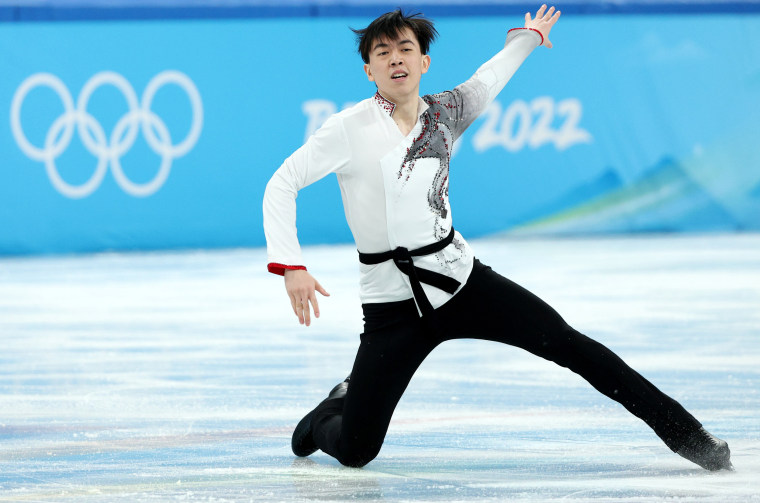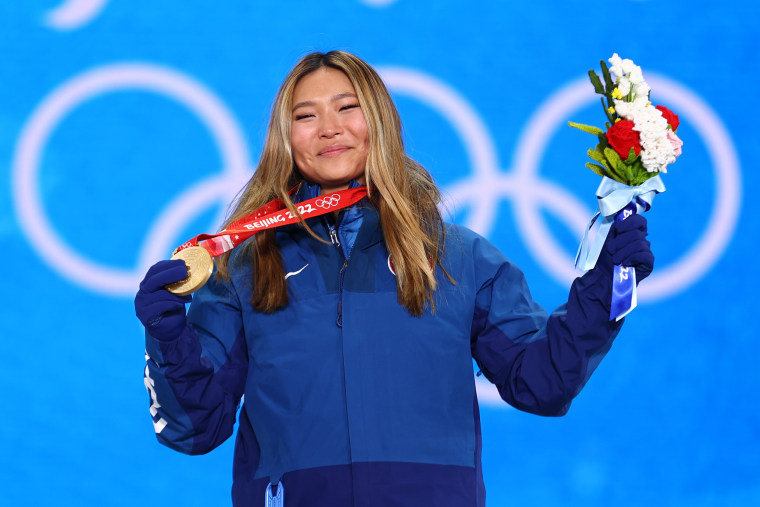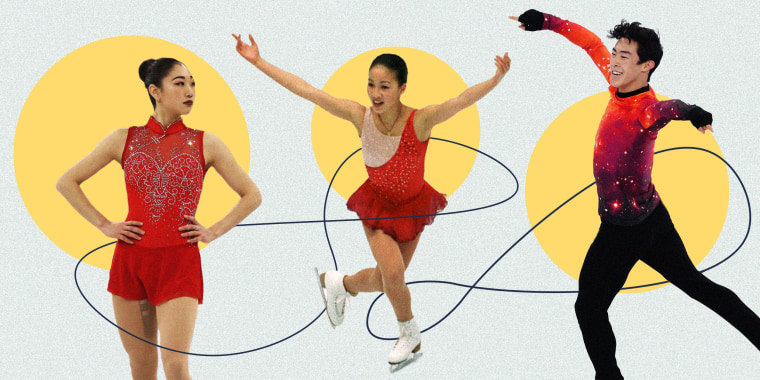The members of Team USA are thrust into the spotlight every Olympic Games, but when it comes to coverage of Asian American athletes, experts say the media often falls short, giving them little dimension.
Scholars pointed out that Asian representation among Olympians has increased over the years, but stories and headlines about Asian American athletes have remained stagnant, continuing to revolve around athletes’ “strict” parents, immigrant sacrifice and discipline. While these can be critical elements of Olympians’ lives, experts say the simultaneous erasure of other aspects, like passion and individuality, have led to a longstanding and dangerous history of refusing to illustrate Asian Americans as full human beings, even in the realm of elite sports.
“If you start to dig underneath that language and look at the larger history, the longer portrayal of Asian Americans, in the way, even in these positive iterations in talking about Asian American Olympians, it’s still relying on this language of yellow peril and model minority,” Jennifer Ho, president of the Association for Asian American Studies, said. “It’s been repurposed and repackaged, but it’s still really referencing Asian Americans as part of a larger collectivity.”
The media has historically relied on many of the same narratives, experts say. More than 20 years ago, Michelle Kwan’s father, Danny Kwan, was often described as the a central, demanding figure behind her success. Decades later, Vincent Zhou’s parents have been framed in similar ways — those who have made sacrifices for their son to compete. In fact, the phrase “family sacrifice” has been attached to almost all Asian American Olympians, including Alex and Maia Shibutani, Mirai Nagasu and snowboarder Chloe Kim. The achievements of snowboarding teammate Shaun White, however, have long been chalked up to his pure love of the sport.

Ho noted that Olympians’ tight-knit relationships with parents and other figures in their lives should be taken “at face value,” but emphasized that the media consistently uplifts these narratives over others for a reason. The focus on immigrant stories works to maintain Asian Americans as forever “new” to the U.S., regardless of how long they’ve established communities, Ho said.
“With the constant narrative, especially in Chloe Kim with her father, which … I also don’t want to take away from the realness of that relationship,” Ho said. “At the same time, it’s getting attention because it’s playing into these scripts that already exist.”
Tina Chen, a history professor at the University of Manitoba and a member of Skate Canada, the country’s governing body for figure skating, also said the media often reinforces a distance between Asian Americans and the greater American population. Kwan’s former coach Frank Carroll has even been quoted as saying, “Asian skaters are taught discipline from Day One.” That philosophy is “different from American kids who are taught, ‘Oh, dear! You have a right to stand up for whatever you think!’” he said.
“There’s this idea that somehow there’s something different and isn’t really American enough so that we want to attribute it to something different,” Chen said. “Ultimately what we’re saying is that we don’t recognize Asian Americans as full citizens in their own right. So we’re always looking for a point of difference between them and the so-called regular American.”

Chen noted that these collective, uniform depictions also imagine Asian American bodies as hard-working sources of labor, that are over-disciplined and no longer have their unique emotions. Asian Americans, according to the media, are “willing to always work hard, and people are always going to keep them working hard,” Chen said.
“There’s a comfort in the idea that you can really discipline certain people, and they will do what you want them to do,” she explained.
Ho explained that the descriptions are particularly harmful when examined in the context of the model minority myth. So much of the coverage continues to uplift a “good immigrant” narrative with Olympic immigrant parents. The trope can potentially be used to place Asian Americans in contention with athletes from other marginalized groups, she said. And over time, mainstream society grows comfortable with these narratives because, ultimately, it’s “the story of assimilation,” Chen said.
“It’s Asians following the rules and trying to be the best within the framework that they were given, and one they should be grateful for,” she explained.
The realities around Olympians and the factors that contribute to their greatness often tells a different story than what’s highlighted on our television screens. The tendency to cherry-pick “strict Asian parent” narratives is particularly apparent when at the rink with Olympic athletes, Erica Rand, author of “Red Nails, Black Skates: Gender, Cash, and Pleasure On and Off the Ice,” said.
“That ‘other’ culture, where parents work their kids especially hard and they’re training like robots or whatever — that description is unfair. There are ways we don’t necessarily see white skaters talked about,” Rand said. “If you go to a rink and watch training, you might see the diverse range of parents who are hovering or not, who are demanding or not, are emphasizing their skaters’ joy in skating or not, who are mean or not. That covers a huge range of people, but you don’t actually see those parents talked about in the same way.”
Zhou himself previously said that it “takes a village” to raise an Olympic athlete, regardless of background. It would be remiss to ignore the personal love and passion that he and other elite athletes have for their sports, he added. The trope ultimately removes agency from the athletes themselves, and he said, “We truly don’t want to do it, we’re not going to do it.”
“While people might say, ‘This person’s parents forced them to do this,’ … when we’re on the ice, we’re the only people in control of our own bodies and minds,” Zhou said.
To ensure more humanizing coverage, experts say it’s not enough to increase the diversity of staff in newsrooms. Lived experience, while critical to reporting on marginalized communities, is further bolstered by racial literacy, they said.
“There’s been so much work done and media coverage on anti-Asian racism,” Chen said. “But somehow, that is not informing us when we talk about sports. I think we have to ask ourselves, ‘Are we complicit in these?’ ‘How are we expecting people to tell these stories?’”
